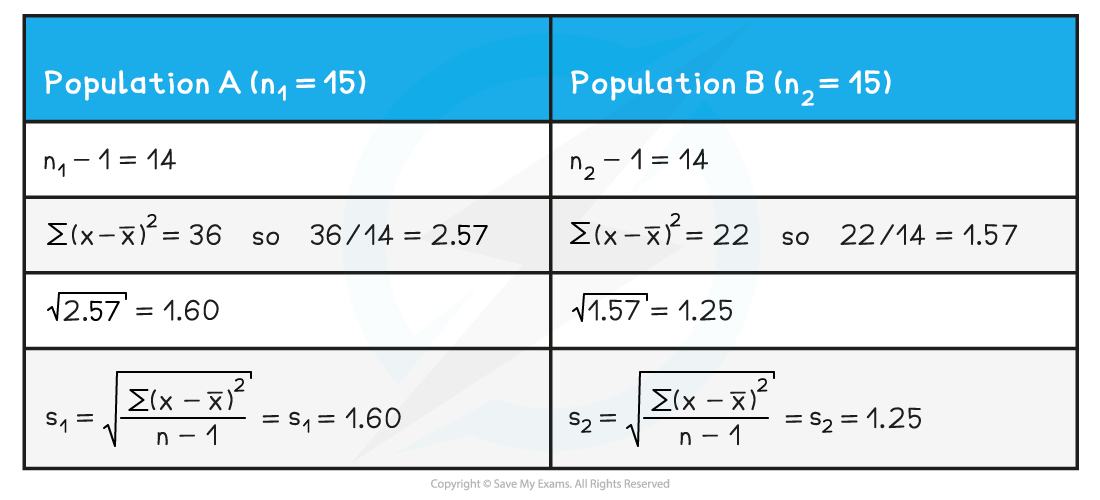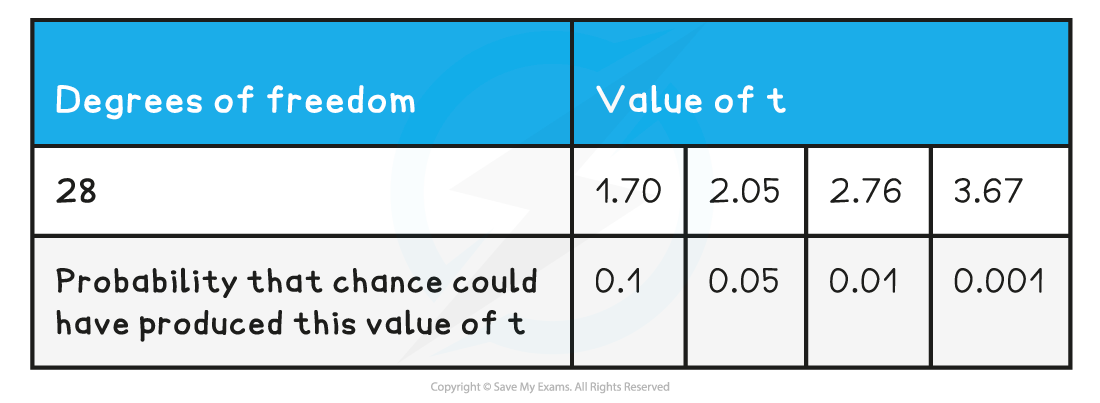- 翰林提供学术活动、国际课程、科研项目一站式留学背景提升服务!
- 400 888 0080
CIE A Level Biology复习笔记17.1.4 Variation: t-test Worked Example
Variation: t-test Worked Example
Worked Example
The ear length of two populations of rabbits was measured.Ear lengths of population A (mm):
62, 60, 59, 61, 60, 58, 59, 60, 57, 56, 59, 58, 60, 59, 57
Ear lengths of population B (mm):58, 59, 57, 59, 59, 57, 55, 60, 57, 58, 59, 58, 57, 58, 59
Use the t-test to determine whether there is a significant difference in ear length between the two populations.
Solution
-
- Null hypothesis: There is no significant difference between the ear lengths of the rabbits in populations A and B
- Sample sizes:
- Population A: n1 = 15
- Population B: n2 = 15
Step 1: Calculate the mean for each data set:
Mean for population A x̅1 = 885 / 15 = 59 mm
Mean for population B x̅2 = 870 / 15 = 58 mm
Step 2: Calculate the standard deviation (s) for each set of data

To find the standard deviations divide the sum of each square by n - 1 for each data set, and take the square root of each value

Step 3: Square the standard deviation and divide by n (the number of observations) in each sample, for both samples:
Step 4: Add the values from step 3 together and find the square root
Step 5: Divide the difference between the two means by the value from step 4


Step 6: Calculate the degrees of freedom (v) for all the data:
v = (n1 - 1) + (n2 - 1) = 14 + 14 = 28
Step 7: Look at a table that relates t values to the probability that the differences between data sets is due to chance to find where the t value of 1.91 for 28 degrees of freedom (v) calculated lies

Step 8: Draw a conclusion about the statistical relevance of the data
A t value of 1.91 represents a probability between 0.05 and 0.1 which is greater than the critical value of 0.05.
This means the null hypothesis should be accepted, as there are no significant differences between the two sets of results (any differences between the means of the ear length of rabbits in the two populations are due to chance)
转载自savemyexams

最新发布
© 2026. All Rights Reserved. 沪ICP备2023009024号-1









